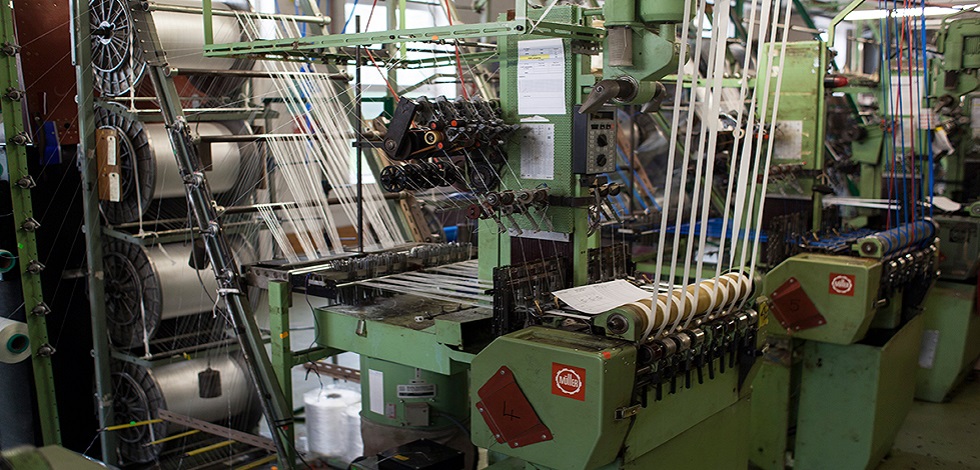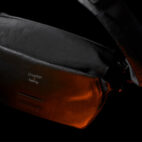Trakke Webbing Factory Visit
Following on from a visit to the factory that provides the waxed cotton for their bags, Trakke recently made a journey to the factory that produces their webbing. They were happy for us to repost their intriguing and informative write-up of their visit, which you can enjoy below and which provides great insight into the manufacturing of one of the most widespread materials in the carry world…
–
Webbing is a ubiquitous material; used in a wide range of applications from military equipment to the fabrication of furniture, and yet few of us consider how or why it is made. The innovation of webbing is simple, but effective. By using a single strand fibre and densely weaving it, a much stronger and more durable strapping is created; much lighter than alternatives such as leather.
At Trakke, we use a polyester webbing designed for military applications. Polyester is light and strong, while being abrasion resistant with a relatively low rate of water absorption that makes it ideal for outdoor use. Like all of our materials, we searched high and low to find a manufacturer capable of making the webbing in the UK, and our search ended when we found a company, nestled in the heart of the Derbyshire countryside who have operated from the same Victorian factory for the last 150 years.
Derbyshire has a long history in weaving – it was home to the first mill ever to be built in the UK. The mill that manufactures our webbing was once powered by a water-wheel, and the remnants of its industrial past are still present today. Water flows right beneath the factory floor, and the stone staircases are worn from centuries of use.
Today, the mill uses modernised machinery and runs on mains electricity. Employing eighty people and running over one hundred and thirty looms twenty four hours a day allows the business to produce over a million metres of webbing a week! Indeed they produce enough webbing each year to stretch to the moon and back!
A couple of months ago, we headed down to visit the factory, and learn more about how webbing is made:
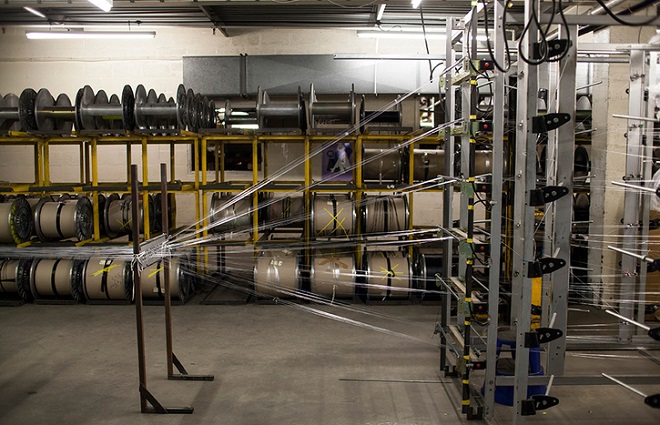
1. Cones to Beams
Raw materials such as polyester fibre arrive at the mill wound on small cones, holding about 1,000 metres of material. To be used on the looms it must be wound onto larger spools, called ‘beams’. This process is automated. Cones are loaded onto racks and threaded through guides onto the beam itself. The beam then rotates, transferring the polyester from the cone.
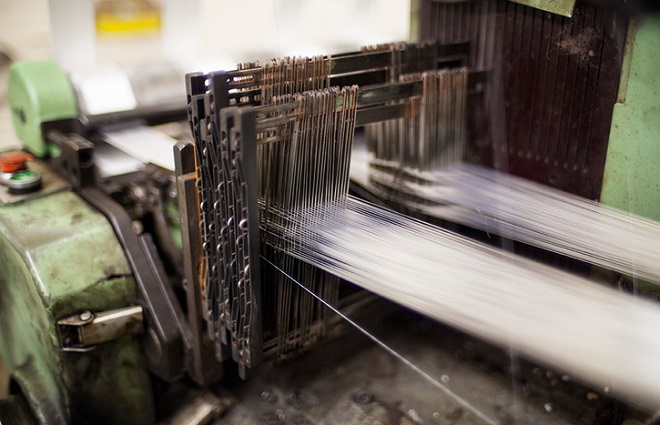
2. Preparing the Looms
Beams are then taken to the weaving room, where over 130 looms operate. The beam is loaded onto a loom and must then be threaded manually and adjusted before the loom can begin to weave. This is a time-consuming process. Some webbings are extremely densely woven, requiring a higher thread count. The fibre on the beams is used to form the warp of the webbing. This is the lengthwise fibre that is held in tension on the loom. Some webbings have up to 600 ‘ends’ creating the warp!
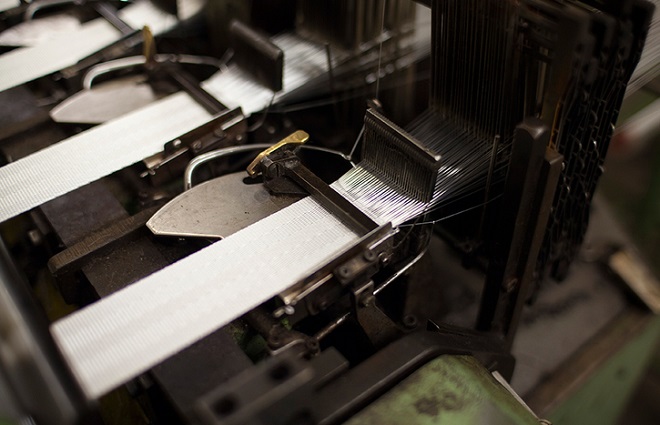
3. Weaving
Working to a digitised pattern that determines the weave pattern, the looms then work more autonomously. A separate cone of yarn is used to introduce the ‘weft’ to the webbing. This is passed through the warp fibres to create a weave pattern. Different patterns have different properties. Some are aesthetically pleasing, some are designed specifically for strength or durability. Each loom can produce over 5,000 metres of webbing each day.
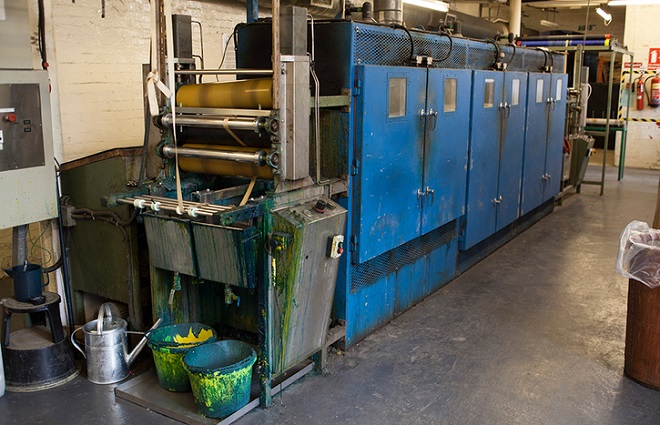
4. Sizing
Finished webbing must then be fed through a heat-setting or ‘sizing’ machine. As the webbing passes through the machine it is dipped in a series of solutions and hot ovens that treat the webbing to stiffen it and give it a more durable finish.
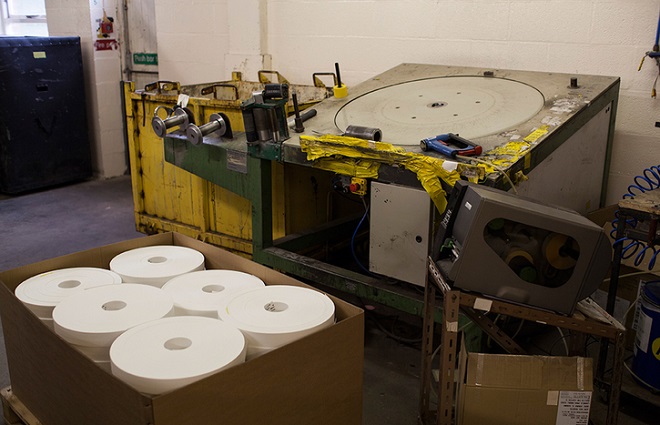
5. Cutting & Blocking
Webbing is then passed through cutting machines which slice it into more manageable lengths. With man-made fibre webbings such as polyester, this is done using a hot-knife that both cuts the webbing and seals the raw end by melting it. The finished tape is then wrapped onto a thick cardboard core, using what is known as a ‘blocking machine’. This rolls the webbing into neat rolls, ready to be packed and sent out to customers.
Note: The webbing in the photographs is not the same as the webbing on our bags – we photographed white webbing to make the process easier to see!





 Carry Awards
Carry Awards Insights
Insights Liking
Liking Projects
Projects Interviews
Interviews
